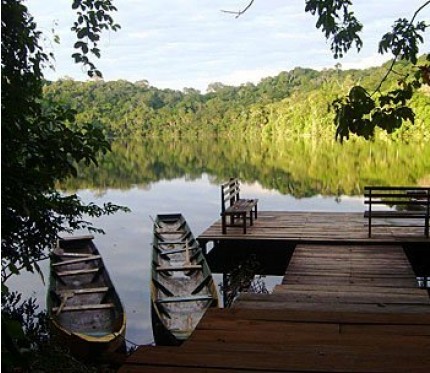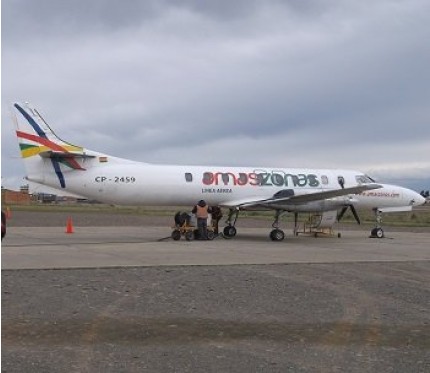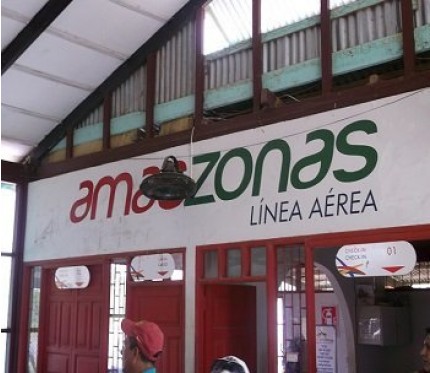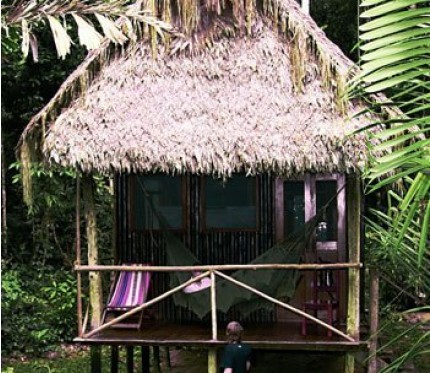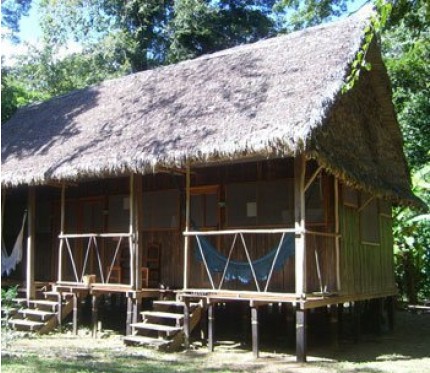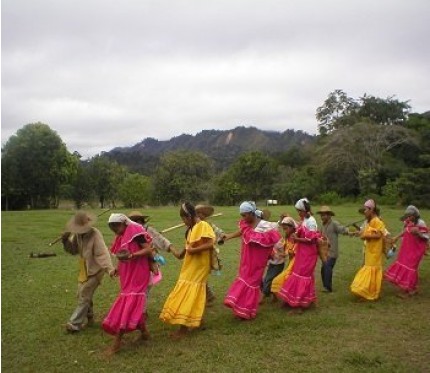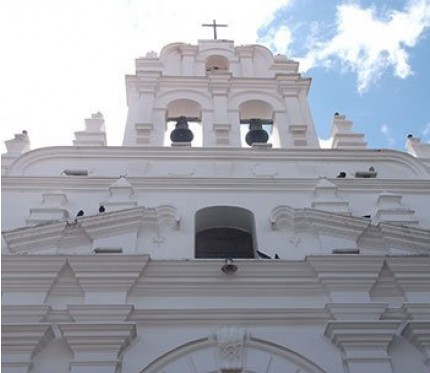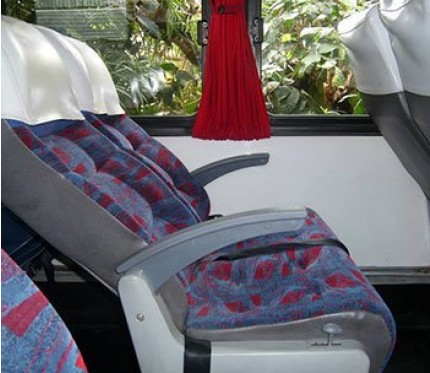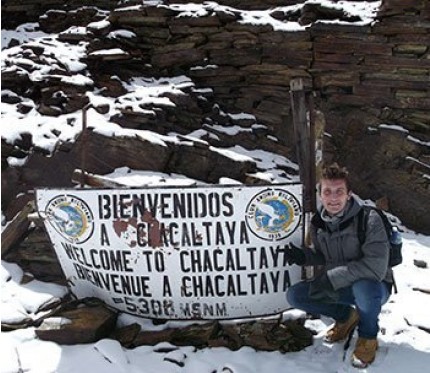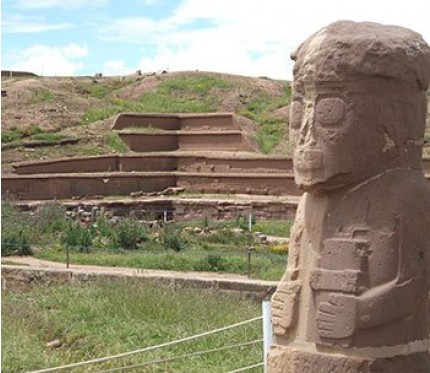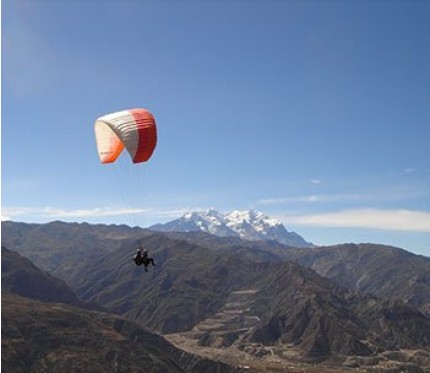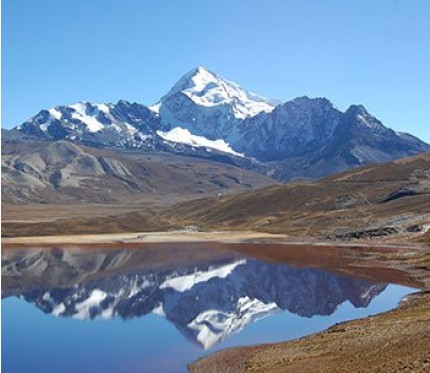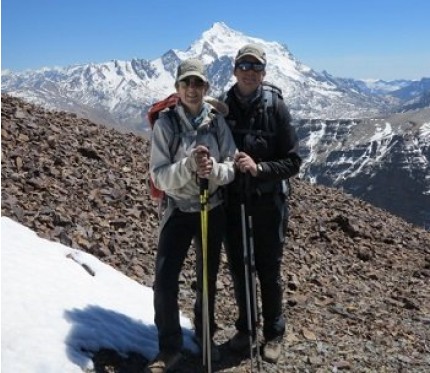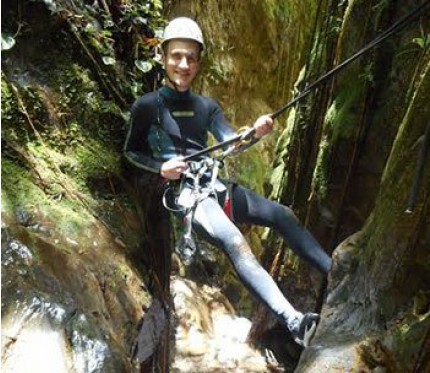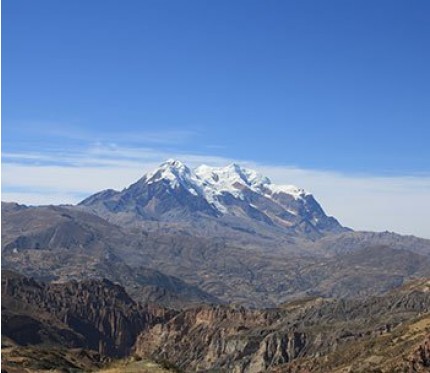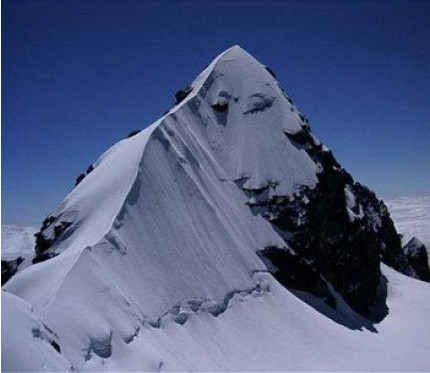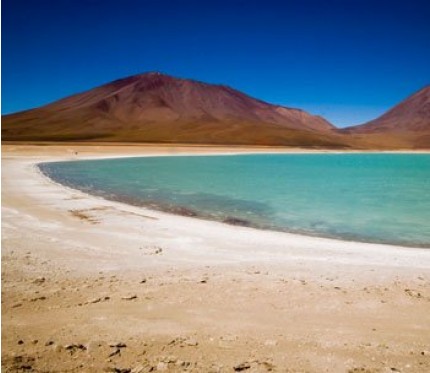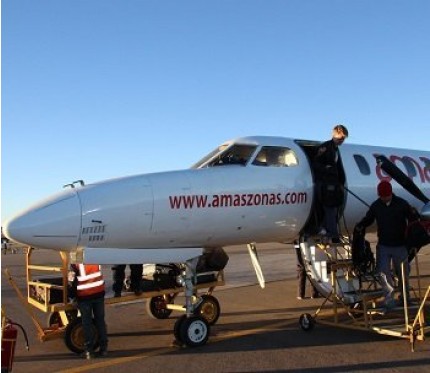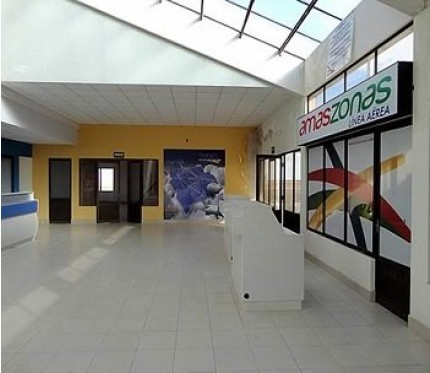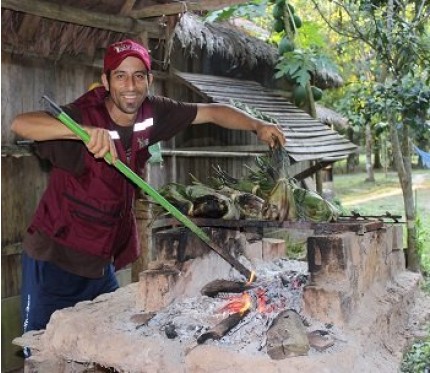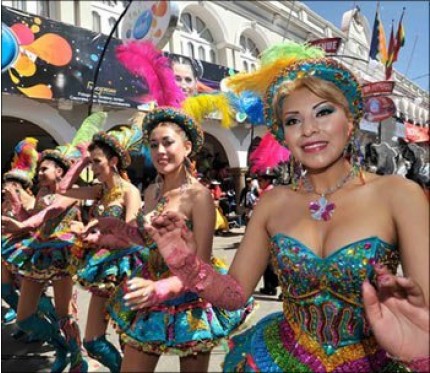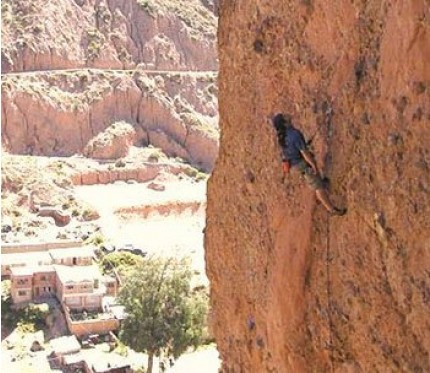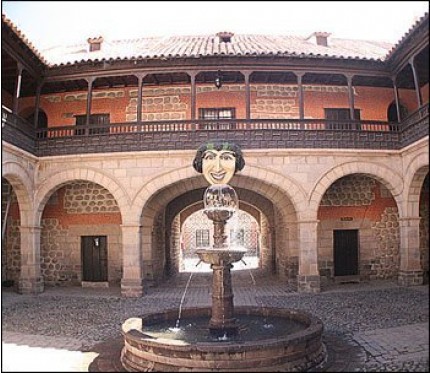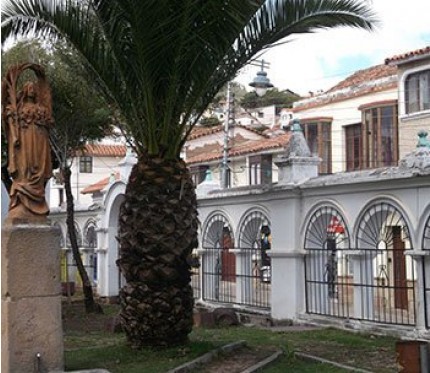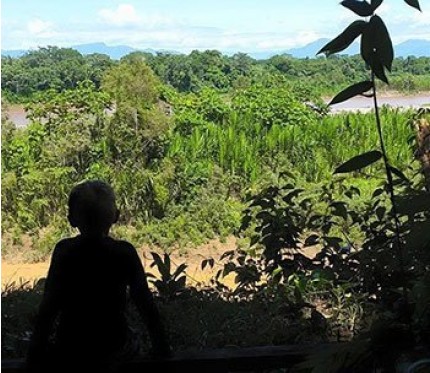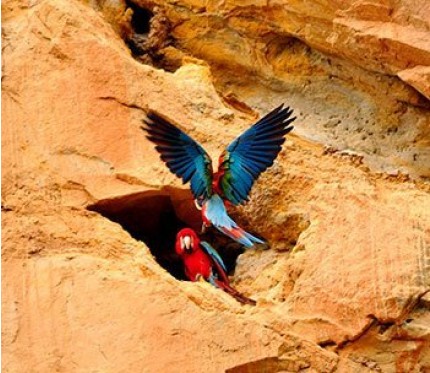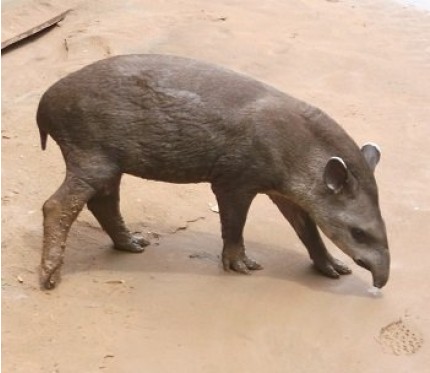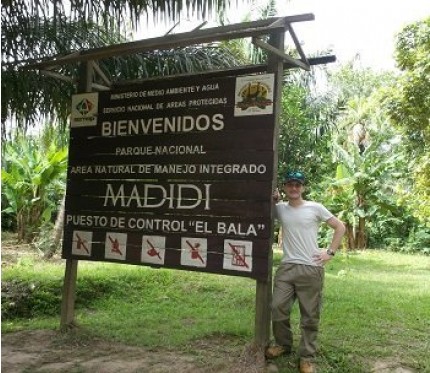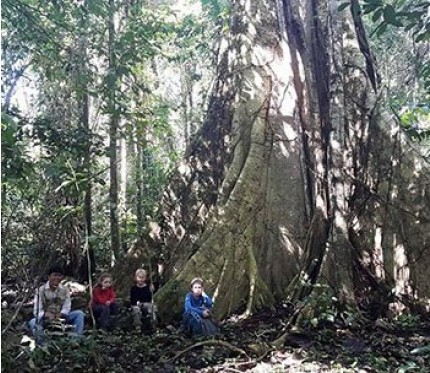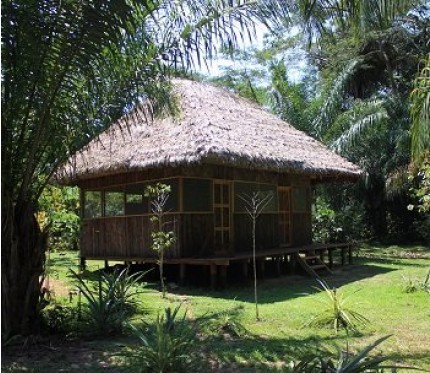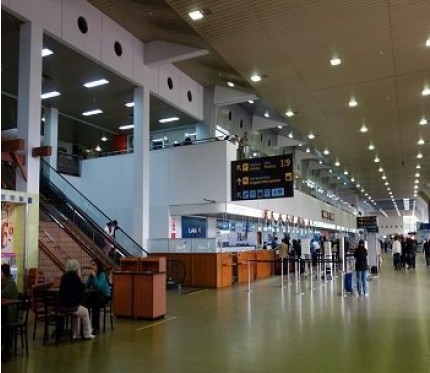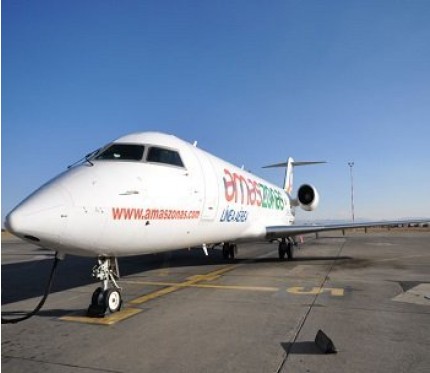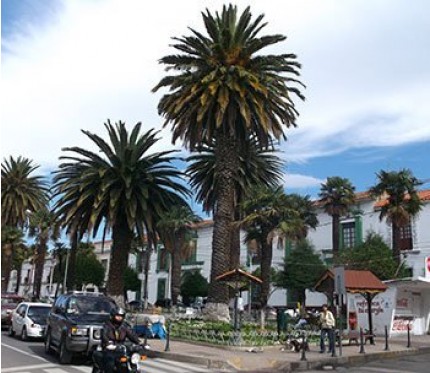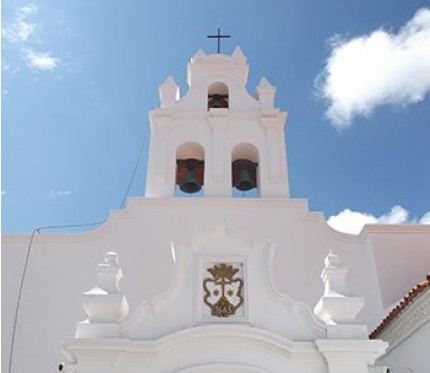BOLIVIA
Bolivia is located in the heart of South America and offers the traveler a unique, authentic travel experience.
Although it is far less visited than its more developed neighbours it is an incredible country full of beautiful scenery, wonderful culture and unmissable activities.
It is bordered by Peru to the north, Argentina to the south, Chile to the west, Brazil to the north & east and Paraguay to the south-east.
Here you will find some background info on this fascinating Andean nation.
If you are just looking for the tour options though you can find them here:
TABLE OF CONTENTS
History of Bolivia
Ancient Times
Many hundreds of years before the arrival of the Spanish the area of present day Bolivia was already home to great civilisations.
The ancient city of Tiwanaku (Tiahuanaco), that was founded about 400 BC and existed for about 600 years, is thought to have had as many as 50,000 habitants at its peak and its rulers commanded an empire that stretched across Bolivia and southern Peru.
Around 1000 AD the empire of Tiwanaku dismantled, the reasons why are not confirmed, and there was a period of small independent states ruled by local chiefs.
The next great civilisation to arrive was the Incas in the 15th century who conquered large parts of South America from much of Ecuador, Peru, western & southern Bolivia, areas of northern Chile and parts of northern Argentina.
The Incas are famed for their skills in road building, stone masonry and organisation and left a legacy of incredible sites. The remains of many Inca roads are evident in Bolivia including the some fantastically preserved example near the start of the Takesi trail.
One of the most important Inca sites is Isla del Sol, an island on the Bolivian side of Lake Titicaca near Copacabana, that the Incas believed to be the birth place of the Sun God.
Inca Paving on the Takesi Trail
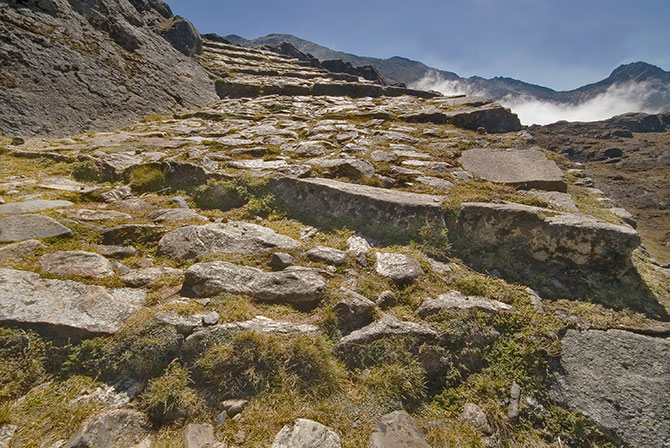
Colonial Times
The beginning of the fall of the Incas started when Francisco Pizzarro and his fellow Spanish conquistadors landed on South American soil in 1532.
By 1535 they had already taken the Inca capital of Cusco and set their sites on the lands further south.
With just a small army of around 160 led by Diego de Almagro and aided by the devastation amongst the native population caused by the western diseases the Spanish had brought to the continent, they quickly took control and by 1938 they founded the city of La Plata.
This new city grew quickly and was proclaimed capital of the Audencia de Charcas in 1559 and, many years later, was to become the current capital of Bolivia, Sucre.
Other cities were established across the territory that was then known as Alto Peru, such as La Paz in 1548 , but the city that was to become the most important of the era was Potosi which was founded in 1545.
It was the mountain that stood over the city of Potosi that was the reason for its growth and the discovery of what was possibly the largest deposits of silver in history within its mines.
“Cerro Rico” (Rich Mountain) as it became known, supplied seemingly endless amounts of silver for shipping back to the Spanish crown and the city that grew beside it became famous for its wealth.
By the 1600s Potosi was the largest city in South America with a population of over 150,000 people and it remained the most important city for hundreds of years.
The mining of silver and other minerals provided the financial back bone for the growth of the Spanish empire across South America.
It was only when the veins of silver that ran through Cerro Rico began to flow at a slower pace did the decline of Potosi and Alto Peru begin in the late 18th century.
Falling silver prices and calls for independence from Spain accelerated its fall from grace in the following decades.
Cerro Rico from Potosi City
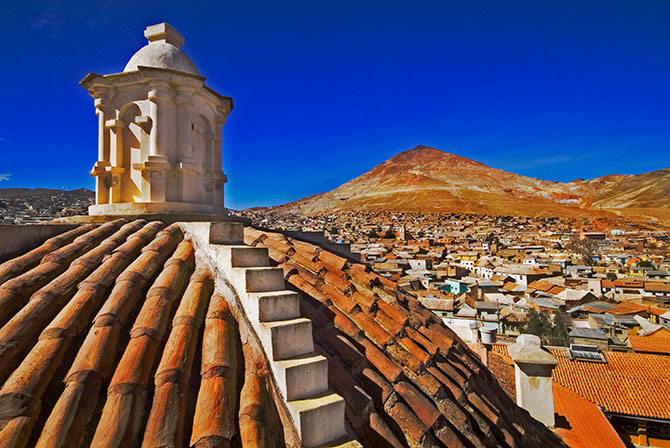
Cities & Departments
Capital
The constitutional capital of Bolivia is Sucre, which is also the Judicial capital, but La Paz is considered the 'de facto' capital and is the seat of government.
Historically the reason Sucre is the official capital is because it was originally the capital of Alto Peru , which later became the country of Bolivia, after gaining independence from Spain.
In the early twentieth century however, it was decided to move the seat of government to La Paz due to its location being better suited and the fact that the areas close to Sucre, such as Potosi, had declined in importance.
There have been calls, such as prior to the writing of the new constitution that was ratified in 2009, to declare La Paz as the capital but this was met with fierce opposition from Sucre and other areas so the idea was abandoned.
Departments
Bolivia is split into nine departments each with its own adminsitrative capital.
Santa Cruz is the most populous city and the fasest growing although La Paz and El Alto (the city that sits on the plain directly above La Paz) combined have a greater number of people in total.
| DEPARTMENT | CAPITAL |
| LA PAZ | LA PAZ |
| PANDO | COBIJA |
| BENI | TRINIDAD |
| COCHABAMBA | COCHABAMBA |
| ORURO | ORURO |
| SANTA CRUZ | SANTA CRUZ DE LA SIERRA |
| POTOSI | POTOSI |
| CHUQUISACA | SUCRE |
| TARIJA | TARIJA |
Since the implimentation of the constitution in 2009 the country has been going through the process of allowing more autonomy to each of the departments decentralising the control of certain responsibilities from the central government.
Cities have an elected Mayor (Alcalde) that has responsibility for a number of municipal services.
Climate
Bolivia has a very varied climate due to its vast size, large differences in altitude between regions resulting in a range of different ecosystems.
Additionally, the countries proximity to the equator means it does not experience 4 seasons like some countries but it is often said to have two - rainy season and dry season.
Although you will find variations in opinion, dry season is considered to be from April or May through to September or October and the rainy season from October / November through to March / April.
Of course, weather is unpredictable and cannot be defined in exact terms but the above is a pretty good guideline as to what to expect.
Usually the heaviest rain period falls during Jan/Feb/Mar and after sustained periods of rain the country can suffer from problems such as damaged roads and, in some areas, flooding. This is also the best time to see the mirror effect on the Uyuni Salt Flats.
During the dry season, the days are often sunny and the skies clear. At night time though the temperatures are colder than other times of the year, especially in the high-altitude areas.
During July / August for example temperatures can drop below -30 degrees C in the Laguna Colorada area that is visited on the Salt Flats tours.
Large parts of eastern Bolivia are lowlands and experience a hot climate year-round with temperatures typically in the 25 to 35 degrees C range.
The northern areas of this eastern part are home to rainforests and humid semi tropical areas, whilst the central areas have more open savannas with low rolling hills resulting in a slightly humid environment with more wind.
The southern section is often very dry for many months of the year but can be prone to flooding during the rainy season.
People & Languages
Bolivia is home to an incredibly diverse range of people and languages.
It is also the South American country that has the largest percentage of the population being considered indigenous with over 60% belonging to one of the 36 officially recognised indigenous groups.
The two predominant groups are the Aymara and the Quechua. Around 30% of the population are considered mixed European & indigenous and are referred to as mestizo. In the south the Guarani people are the fourth largest.
Throughout the Amazon region there are various distinct ethic groups such as the Chiquitano and Tacana.
The Uru-Chipaya group are possibly the most ancient of all peoples in the region having a history of around 4000 years living in a remote area of the altiplano in between the Sajama area and Uyuni Salt Flats. Unfortunately, their existence is under threat as people leave the harsh area to live and work in the cities.
In the Yungas are there are communities of Afro-Bolivians, numbering around 30,000 in total, that are descended from slaves that were brought by the Spanish in the 16th century.
Those visiting the Santa Cruz region will notice a number of Mennonites whose families immigrated to Bolivia around a 100 years ago and whose population is now around 30,000 spread across 25 settled communities in the area.
So whilst the official primary language of Bolivia is Spanish, in which most administration tasks are performed, there are 36 recognised official languages and even more spoken.
Travelling around the country you will likely hear Spanish, Aymara, Quechua, Guarani, Low German and various other languages as well as a multitude of others from foreign residents that have settled here with it being common to hear English, Portugese, Dutch, German and Chinese in cities such as La Paz, Santa Cruz and Cochabamba.
- Bolivia
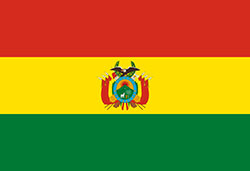
- OFFICIAL NAME
Plurinational State of Bolivia
POPULATION10887000 Estimate 2017
LAND AREA1,098,581 SQ KM
LANGUAGESSpanish (primary administrative) & 36 Indigenous Languages
CURRENCYBoliviano (BOB)
-
3-Day Jungle Tour (Chalalan Ecolodge)
This is our 3-day jungle tour at the Chalalan Ecolodge (Jochi Program). Chalalan is an award-winning community-owned ecolodge. Tours start in Rurrenabaque, Bolivia (transport to Rurrenabaque is not included but available separately) and range from 3 days/ 2 nights and more. During the busy season you should book well in advance as these tours book up fast!
$846.00 -
Flight La Paz to Rurrenabaque
The flight from La Paz to Rurrenabaque is a stunning journey over the Cordillera Real mountains and down to the Amazon jungle. Only taking around 45 minutes this the fastest and most comfortable way to arrive in Rurrenabaque - the gateway to the pampas and jungle tours. The flight is operated by Amaszonas (currently the only airline that flies to Rurrenabaque).
$99.85 -
Flight Rurrenabaque to La Paz
The flight from Rurrenabaque to La Paz is a stunning journey over the Cordillera Real mountains and from the Amazon jungle. Only taking around 45 minutes this the fastest and most comfortable way to return in to La Paz after a visit to Rurrenabaque. The flight is operated by Amaszonas Airlines (currently the only airline that flies from and to Rurrenabaque). We recommend you book early in busy season as spaces fill up quick.
$97.65 -
4-Day Jungle Tour (Chalalan Ecolodge)
This is our 4-day jungle tour at the Chalalan Ecolodge (Pecari Program). Chalalan is an award-winning community-owned ecolodge. Tours start in Rurrenabaque, Bolivia (transport to Rurre is not included but available separately) and range from 3 days/ 2 nights and more. During the busy season you should book well in advance as these tours book up fast!
$1,115.00 -
5-Day Jungle Tour (Chalalan Ecolodge)
This is our 5-day jungle tour at the Chalalan Ecolodge (Capibara Program). Chalalan is an award-winning community-owned ecolodge. Tours start in Rurrenabaque, Bolivia (transport to Rurre is not included but available separately) and range from 3 days/ 2 nights and more. During the busy season you should book well in advance as these tours book up fast!
$1,376.00 -
3-Day Community Jungle (San Miguel del Bala)
In this three day tour you will get to visit the Tacana community of San Miguel del Bala and learn about their culture and traditions plus also visit the world famous Madidi National Park and spend your second night in an ecolodge there. You will see first hand the community lifestyle and visit the surrounding rainforest with a knowledgeble local guide. You will learn about traditional hunting techniques, forest medicines, visit a jungle waterfall and can take a jungle hike to a canyon.
$270.00 -
Cama Bus La Paz to Sucre
DIRECT - Leaving daily at around 19.30 from La Paz to Sucre. Toilet, heating, reclinable seats and movies. Journey 12 hours approximately.
$27.00 -
Tourist Bus Copacabana to La Paz
Copacabana to La Paz is only a 4 - 5 -hour-journey and this tourist bus leaves from the main plaza at 13.30. A convenient option for this picturesque journey. Arrives in La Paz and drops you off at the bus terminal in La Paz.
$8.00 -
Chacaltaya & Valley Of The Moon La Paz
Chacaltaya was the "highest commercial ski area" in the world although very little sking takes place nowadays and it is mainly visited to witness the stunning views of the Cordillera Real mountain range from Chacaltaya's 5300 meter peak. Chacaltaya is a good day trip from La Paz and possible for anyone who has acclimatised a little.
$18.00 -
Tiwanaku Pre-Inca Ruins Day Trip - La Paz
Tiwanaku is one of the most important ancient civilizations in the world and more is being learnt about it every day. For anyone with an interest in the history of Andean cultures and archaeology it is a worth while day trip from La Paz. This archaeological site of is a little over 70 km west from the city of La Paz towards the border town of Desaguadero.
$16.00 -
Tandem Paragliding in Huajchilla - La Paz
Exhilarating and relaxing, tandem paragliding requires no previous experience or special skills. Makes for a great half day out. Your tandem flight will be with an experienced pilot who has hundreds of previous flights and treats safety as a priority. Lots of fun!
$120.00 -
Huayna Potosi 3-Day Climb
Huayna Potosi is a beginner level mountain climb over a 3 day period including basic training, equipment and a rare chance to get over 6000 meters without being an experienced climber. Highly recommended. This is one of the most popular climbs in South America.
$225.00 -
Chacaltaya to Huayna Potosi 1-Day Trek
This short but challenging trek follows a high altitude trail between two of Bolivia's most famous mountains - Huayna Potosi and Chacaltaya. All of this trek is above 4500 meters so it is essential to be well acclimatised to undertake this. This is a good option as altitude training if you are planning Huayna Potosi later on.
$90.00 -
Canyoning Half Day - Coroico
Canyoning is an exciting and fun activity that involves rappelling down waterfalls to pass from one end of a canyon to the other. This is a beginner level trip that is suitable for all abilities. This canyoning tour is in Coroico, 3.5 hours from La Paz.
$60.00 -
Illimani 4-Day Climb
Illimani is the mountain that overlooks La Paz and is considered the guardian mountain of the city. It is the second highest peak in Bolivia standing at 6438 meters (21,122 ft) and the highest in the Cordillera Real. This is a challenging climb and while not very technical some experience is required. This climb is run only during the dry season.
$525.00 -
Pequeño Alpamayo (Condoriri Massif) 3-Day Climb
Pequeño Alpamayo is a 5370 meter (17618 feet) mountain that is part of the Condoriri Massif. Not very technical this is a good option to climb before attempting larger peaks or purely for the incredible views it provides. This is Andean mountain scenery at its best and one reason this is the second most climbed peak in Bolivia.
$300.00 -
Sajama 4-Day Climb
This 4 day climb of Mount Sajama is a chance to climb the highest mountain in Bolivia at an altitude of 6549 meters. This is not a technical climb and can be attempted by well acclimatised beginners.
$630.00 -
Salt Flats Tour from San Pedro de Atacama (Chile) to Uyuni - 3 Days
3-day salt flats tour leaving from San Pedro de Atacama (Chile) and finishing in Uyuni. The best way to get to Bolivia from Chile taking in the amazing Salt Flats, colored lakes, geysers and more.
$295.00 -
Flight La Paz to Uyuni (Amaszonas)
The flight from La Paz to Uyuni is a one hour flight and means you can avoid the 10 to 12 hour overnight bus journey. These flights are now schedule to go everyday from La Paz International airport. This flight is operated by Amaszonas Airlines.
$97.05 -
Flight Uyuni to La Paz (Amaszonas)
The flight from Uyuni to La Paz is a one hour flight and means you can avoid the 10 to 12 hour overnight bus journey. These flights are now scheduled to go everyday from Uyuni Joya Andina airport. This flight is operated by Amaszonas Airlines.
$94.85 -
3-Day Jungle Tour (Mashaquipe Ecolodge)
This is our 3 day jungle tour operated by Mashaquipe (Madidi Nature & Culture Program). Visit Madidi National Park on a certified eco-tour and see the wonders of the Amazon rainforest. We work with "green action" certified operator Mashaquipe to offer quality eco-tours in Madidi. Upgrade to private cabins available.
$290.00 -
Cama Bus La Paz to Potosí
DIRECT - Leaving daily at 20.30 from La Paz to Potosi. Toilet, heating, reclinable seats and movies. Journey 8 hours approximately.
$20.00 -
Oruro Carnival 2020 Day Trip
The Oruro Carnival 2020 of Bolivia is the biggest cultural event of the year and possibly the largest of all the Andean festivals. It is a fascinating display of colorful costumes and traditional Bolivian dances that is attended by tens of thousands of people from around the world. This is a day trip that starts from and returns to La Paz.
$85.00 -
Rock Climbing Half Day - La Paz
We offer tours in La Paz to one of the best rock climbing areas: Aranjuez. Test your skill and endurance, both mental and physical and try your hand at rock climbing. There are more than 100 routes available, suitable for all levels that will make for a great day out. The rock climb will be with experienced guides who have done this hundreds of previous climbs and treat safety as a priority. Lots of fun!
$45.00 -
Cama Bus Potosí to La Paz
DIRECT - Leaving daily at 20.45 from Potosi to La Paz. Toilet, heating, reclinable seats and movies. Journey 10 hours approximately.
$20.00 -
Cama Bus Sucre to La Paz
DIRECT - Leaving daily at around 19.30 from Sucre to La Paz. Toilet, heating, reclining seats and movies. Journey 12 hours approximately.
$27.00 -
Full Day Jungle Tour (Madidi Jungle Ecolodge)
This is our 1 day jungle tour operated by Madidi Jungle Ecolodge (Cullpana Program). We have chosen to work with the operator Madidi Jungle Ecolodge for these tours as they offer a high quality service. This is a new venture of Community Ecotourism totally created and managed by indigenous families from San José de Uchupiamonas. English-speaking guide for the tour.
$120.00 -
2-Day Jungle Tour (Madidi Jungle Ecolodge)
This is our 2 day jungle tour operated by Madidi Jungle Ecolodge (Mapajo Program). We have chosen to work with the operator Madidi Jungle Ecolodge for these tours as they offer a high quality service. This is a new venture of Community Ecotourism totally created and managed by indigenous families from San Jose de Uchupiamonas. English-speaking guide for the tour.
$205.00 -
3-Day Jungle Tour (Madidi Jungle Ecolodge)
This is our 3 day jungle tour operated by Madidi Jungle Ecolodge (Tareche Program). We have chosen to work with the operator Madidi Jungle Ecolodge for these tours as they offer a high quality service. This is a new venture of Community Ecotourism totally created and managed by indigenous families from San Jose de Uchupiamonas. English-speaking guide for the tour.
$290.00 -
4-Day Jungle Tour (Madidi Jungle Ecolodge)
This is our 4 day jungle tour operated by Madidi Jungle Ecolodge (Wabu Program). We have chosen to work with the operator Madidi Jungle Ecolodge for these tours as they offer a high quality service. Madidi Jungle Ecolodge is a new venture of Community Ecotourism totally created and managed by indigenous families from San Jose de Uchupiamonas. English-speaking guide for the tour.
$375.00 -
5-Day Jungle Tour (Madidi Jungle Ecolodge)
This is our 5 day jungle tour operated by Madidi Jungle Ecolodge (Biwa Program). We have chosen to work with the operator Madidi Jungle Ecolodge for these tours as they offer a high quality service. This is a new venture of Community Ecotourism totally created and managed by indigenous families from San Jose de Uchupiamonas. English-speaking guide for the tour.
$460.00 -
2-Day Jungle Tour (Mashaquipe Ecolodge)
This is our 2 day jungle tour operated by Mashaquipe. Visit the fascinating Madidi National Park on a certified eco-tour and see the wonders of the Amazon rainforest. We work with the "green action" certified operator Mashaquipe to offer quality eco-tours in Madidi. Upgrade to private cabins available.
$210.00 -
Flight La Paz to Santa Cruz
The La Paz to Santa Cruz de la Sierra flight (Viru Viru airport) is a stunning journey over the Cordillera Real mountains and down to this beautiful city - largest city in Bolivia. The flight takes around 60 minutes and it is the fastest and most comfortable way to Santa Cruz. Book early in busy season! This flight is operated by Amaszonas Airlines.
$125.00 -
Flight Santa Cruz to La Paz
The Santa Cruz de la Sierra to La Paz flight is a stunning journey between the two largest cities in Bolivia, from the lowlands up to the altiplano over the Cordillera Real mountains. The flight takes around 60 minutes and it is the fastest and most comfortable way from Santa Cruz to La Paz. Book early in busy season! This flight is operated by Amaszonas Airlines.
$114.00 -
Flight La Paz to Sucre (Amaszonas)
Amaszonas Airlines - Catch a direct flight from La Paz to Sucre, the fastest and most comfortable way to Sucre avoiding a 12 hours bus ride. Flight schedule can change but it currently leaves twice a day - first flight between 8.00 and 10.00 am and second flight at 16.30 / 17.00. The flight leaves everyday. Book early in busy season!
$83.50 -
Flight Sucre to La Paz (Amaszonas)
Amaszonas Airlines - Catch a direct flight from Sucre to La Paz, the fastest and most comfortable way avoiding a 12 hours bus ride. Flight schedule can change but it currently leaves twice a day - first flight between 8.00 and 10.00 am and second flight at 16.30 / 17.00. The flight leaves everyday. Book early in busy season!
$81.33


